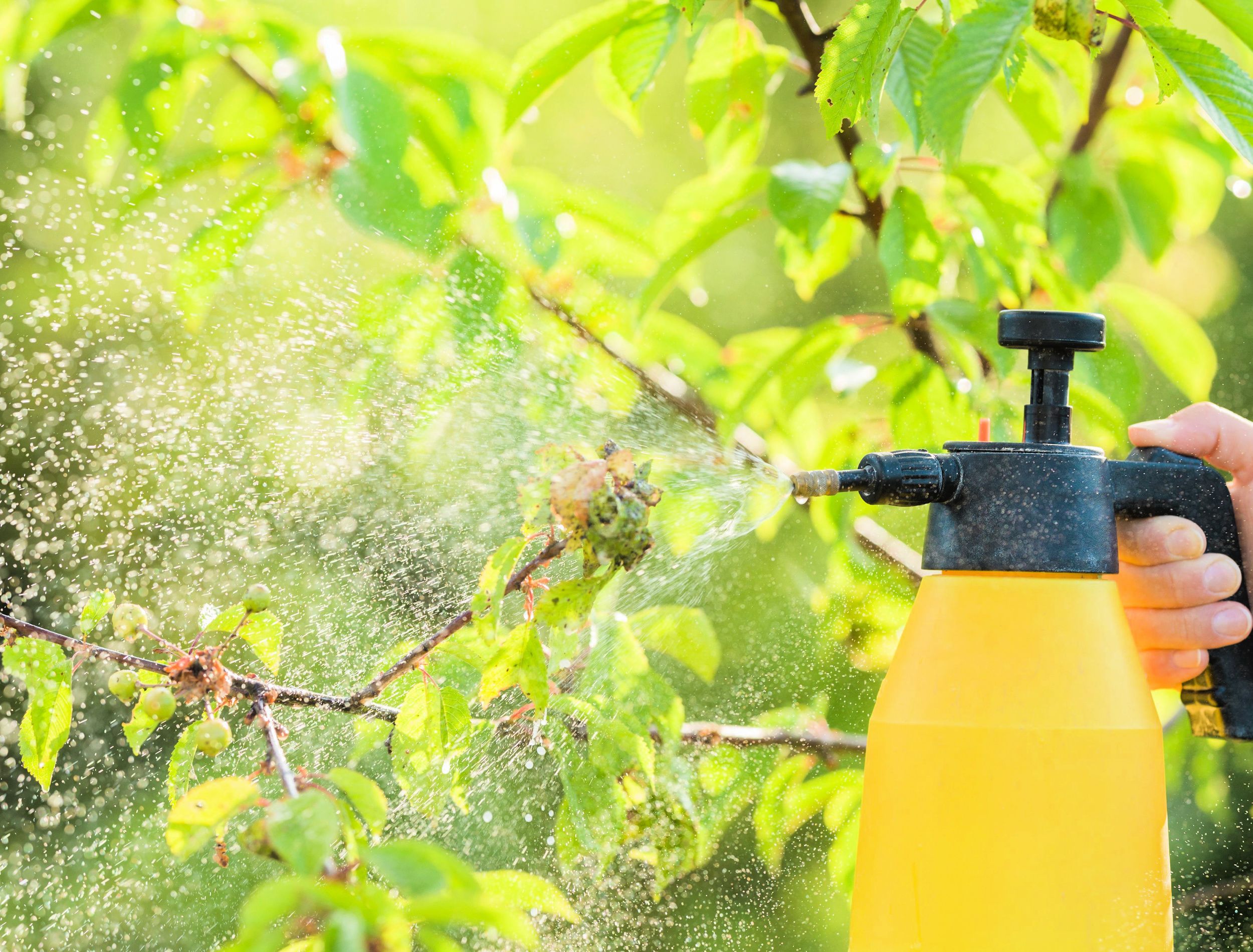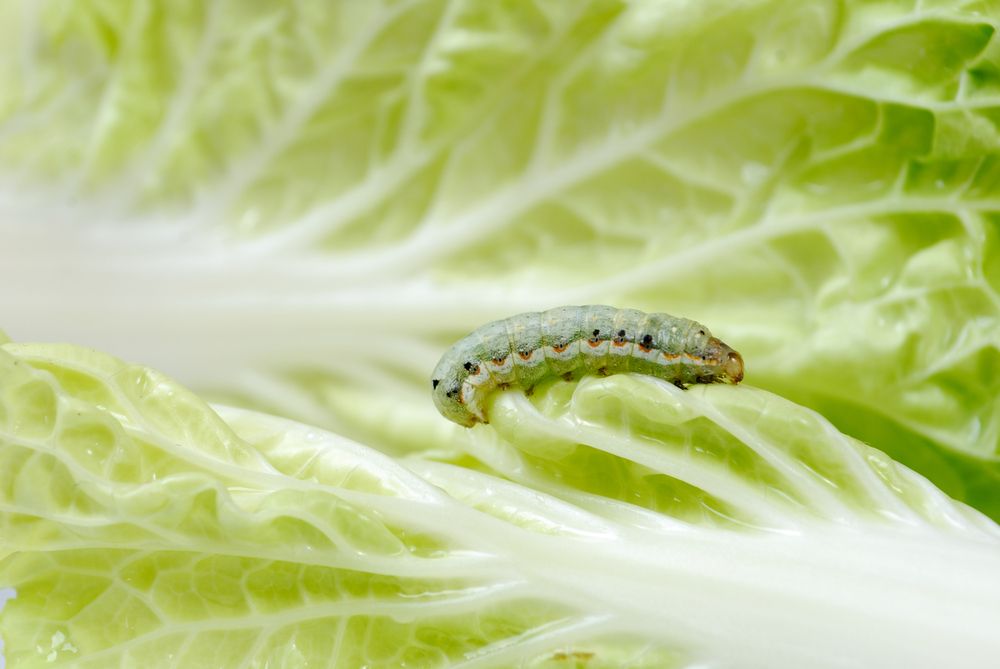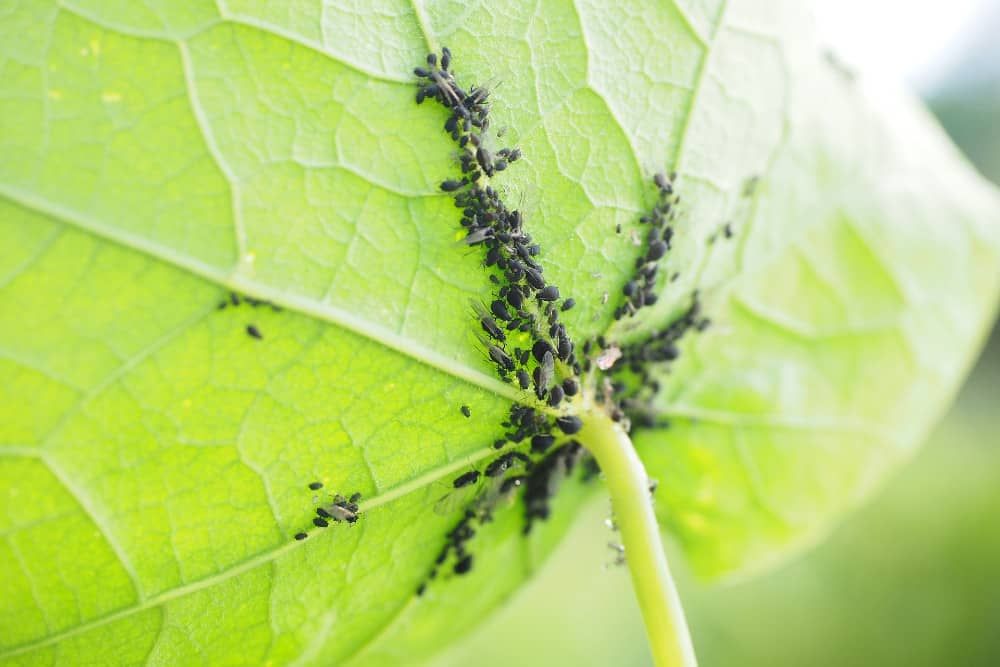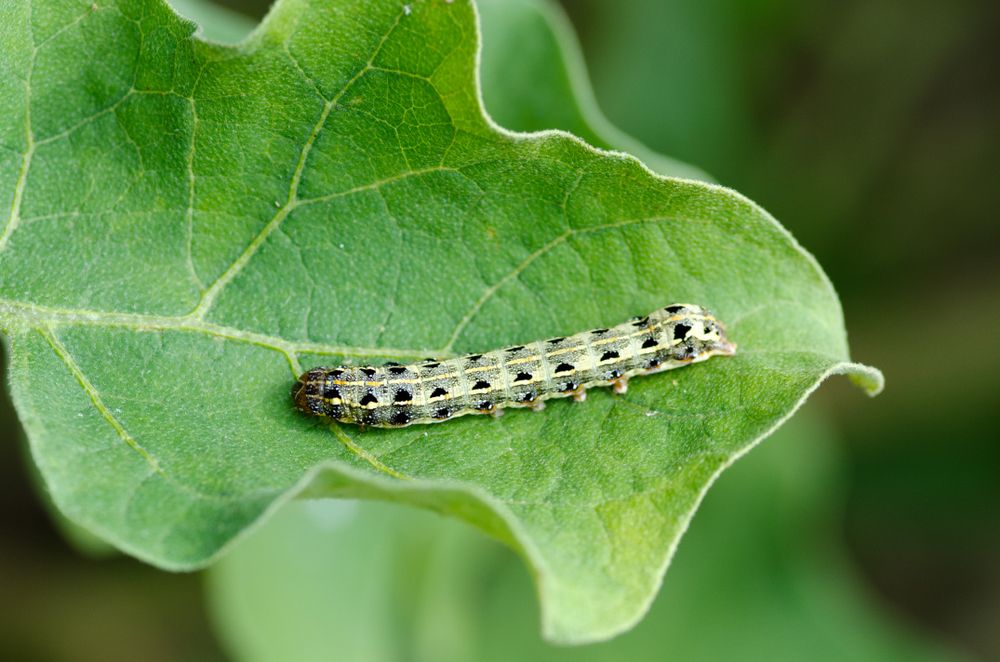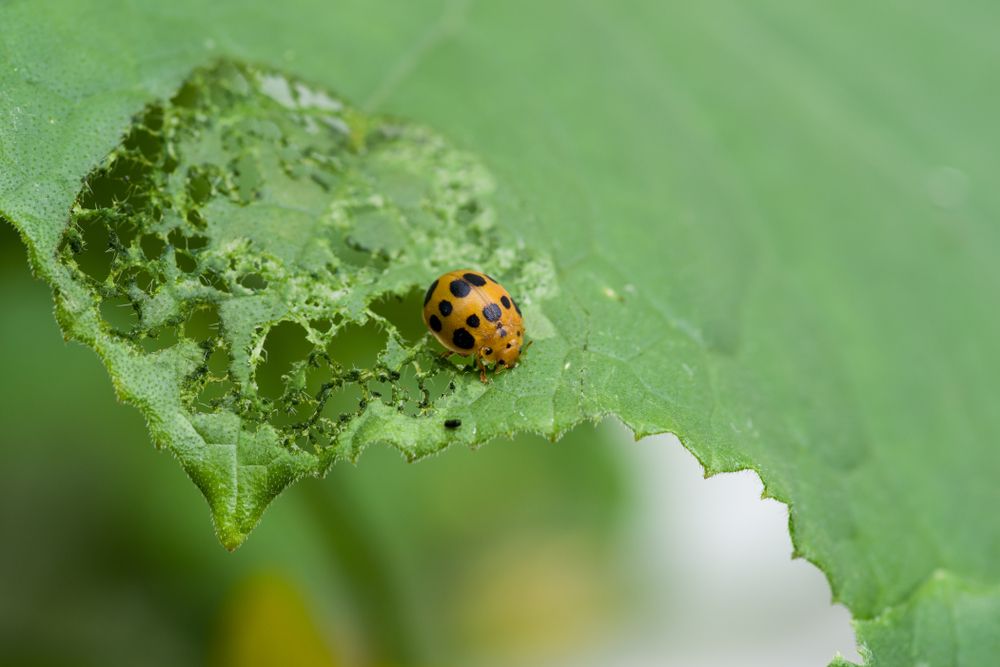There's no getting around it: Pests are a huge nuisance in the garden. They can damage plants by chewing on them, laying eggs that hatch into hungry larvae in your soil, and flying or crawling all over your carefully cultivated produce. But don't worry, with a little know-how, you can rid your garden of these five worst garden insects once and for all!
Below, you’ll discover practical methods for getting rid of them. So read on and get ready to take back your garden!
Cabbage Maggots
Image credits: fuyu liu via Shutterstock
Cabbage maggots are tiny worm-like insects that are approximately 1/3 of an inch long. If you have a cabbage maggot infestation, you will first notice your foliage wilting and stunted growth.
Cabbage maggots are particularly fond of cabbage, broccoli, and cauliflower but can also infest other Brassica plants.
When the female cabbage maggot lays her eggs at the roots of your plants, the larvae then gorge themselves on the roots, causing the plants to die.
There are a few different ways to get rid of cabbage maggots. One is to use sticky traps to lure cabbage flies from your plants. You can also try installing "cabbage collars" at the foot of the stalk. These collars can be made from simple cardboard and can be placed flat around the stalk to protect the plants from the cabbage flies laying their eggs.
Practicing crop rotation is also effective in preventing cabbage maggots, as is planting red cabbage. The maggots will not lay their eggs on the red cabbage, but in the larvae state they will eat it, so take the proper precautions. Additionally, you can cover your brassica plants with row covers to prevent cabbage flies from laying eggs on your plants.
If you have cabbage maggots in your garden, don't despair. With a little effort, you can get rid of them and enjoy a bountiful harvest.
Aphids
Image credits: Hans Braxmeier via Pixabay
If you notice that your leaves are wilted, or yellow, if you see sticky honeydew on the underside of leaves or black sooty fungus residue, there is a good chance you have an aphid infestation.
Aphids are small, soft-bodied insects that feed on plant sap, which can weaken the plant and make it more susceptible to disease. In addition, the sweet substance they excrete can attract other pests, such as ants and wasps. Aphids can also spread disease and fungus to your other plants if your not careful.
To control aphids, start by spraying them with water from a hose to remove them from the plant. You can also try using insecticidal soap or neem oil, which are safe for most plants. If these methods don't work, you may need to use a more potent insecticide.
Be sure to follow the instructions on the label carefully to avoid harming your plants. With a bit of persistence, you can get rid of aphids and keep your garden healthy.
Pro-Tip: Aphids do have natural predators in the insect world such as ladybugs and green lacewings. Release they precious insects into your garden and watch the results before you eyes!
Cutworms
Image credits: kale kkm via Shutterstock
Cutworms are pests that can wreak havoc on your garden. They're voracious eaters and can quickly decimate your plants. Fortunately, there are a few things you can do to get rid of them.
First, try to identify the pests early and take action right away. Cutworms are most active at night and dusk, so you may need to do some detective work to find them. Check your plants for signs of damage, such as chewed leaves or stems. If you see any damage, look for cutworms near the stem or the base of the plant.
Once you've found the pests, there are several ways to get rid of them. As with the cabbage maggot, you can try adding a collar around the base of your plant to deter the cutworms from causing any damage to its roots. You can purchase the collar or make the collar out of cardboard and simply wrap the base of your plant.
Diatomaceous earth or coffee grounds scattered around the plants also dissuades cutworms. So, before you throw out your grounds from your morning cup of joe, try to reuse them!
Finally, natural predators, such as birds, can also control cutworms. If you have these animals in your area, they can help keep the pests under control. Add some bird feeders in your yard to attract these allies.
With a little effort, you can get rid of cutworms and protect your garden.
Mexican Bean Beetles
Image credits: Fotoz by David G via Shutterstock
Mexican bean beetles are fond of bean plants, hence their name. If you've found these ladybug-looking pests in your garden, specifically your bean plants, there are a few things you can do to get rid of them.
The first step is to identify where they're coming from. These pests typically lay their eggs on the underside of leaves. Once the eggs hatch, the larvae will start feeding on the leaves. You might see small, brown spots on your plant if they're infested with Mexican bean beetles.
If you think your beans have a Mexican bean beetle problem, there are a few things you can do to get rid of them. One option is to use soap and water to clean the eggs from your leaves. Then apply diatomaceous earth to kill off any remaining larvae.
Finally, crop rotation can also help control the Mexican beetle from attacking your plants.
Japanese Beetles
Image credits: Dantesattic via Canva
Japanese beetles are fairly easy to identify. They have metallic blue-green skin with brown to bronze wings and really stand out.
Unfortunately, these pests can leave quite a trail of destruction. They feed on green vegetation and will completely ravage plants and flowers. While they're eating, their larvae are devouring the roots of your plants.
Although Japanese beetles will eat just about any plant, but they do have favorites. Hibiscus, beans, grape vines, roses, and raspberry are just a few examples of plants they love.
One of the simplest and most effective ways to control Japanese Beetles is to pick them off by hand. This can be done early in the morning when the beetles are less active. Be sure to wear gloves to protect your hands from their sharp mandibles.
Japanese beetle traps are available at most hardware stores and can effectively reduce populations. These traps use a pheromone to attract the beetles, which then get trapped in a container.
Taking steps to control Japanese beetles is vital to protect your plants and keep your garden looking its best. By using a combination of these methods, you can get rid of them for good.
No Need For An Exterminator
Now that you know how to get rid of the five worst garden insects, it's time to put your new knowledge into practice! Have you had any experience dealing with these pests in your own garden? If so, leave a comment below and share your tips and tricks for getting rid of these irritating garden insects.
And if you're still having trouble getting rid of them, don't hesitate to ask for help. There are plenty of experts out there who can give you the advice and support you need to take back your garden from the bugs.

